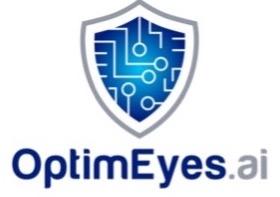The Powerful New Approach to Tackling Today’s Threats and Challenges
As risks emerge and evolve, however, companies often lack the information and context needed to assess the situation effectively, compare one threat against another, gauge the implications, set priorities, and make informed decisions. They need the facts. They need their enterprise-wide risk profile presented clearly, in real-time, to enable unbiased, consistent decision-making – at the board, managerial, and operational levels.
Thankfully, a new methodology – Integrated, Digital Risk Modeling, or IDRM – creates a timely, holistic, contextual view of an organization’s unique risk profile. This allows risk professionals to stay on top of today’s threats and challenges.
Here are seven ways IDRM enables proactive risk management:
- Benchmarks Risk Against Peers and Competitors: Data can be adjusted to take account of industry type, company size, risk appetite, data assets, and other factors. This provides a company-specific industry benchmark to map progress and compare with peers.
- Quantifies Financial Impact: IDRM goes beyond traditional risk score methodology to calculate and predict the financial impact, remediation cost, and annual loss expectancy of each factor of risk across the enterprise.
- Uses an Enterprise’s Own Operational Data to Ensure Accuracy: By taking an inside-out look at your organizational profile – including cybersecurity data, business objectives and dynamics, and the geographic footprint of supply chains – you gain a precise assessment of your organization’s risk profile, benchmarks and risk quantification.
- A Holistic Enterprise-wide Approach: IDRM eliminates the informational and operational silos common in enterprise risk management. It models multiple risk sources – including compliance, data privacy, cyber, financial, operational and supply chain risks – in a single platform that enables consolidated reporting and executive decision making.
- Provides a Common Language Across the Executive, Management, and Operational Teams: IDRM collects and analyzes data, translates it into business intelligence, and presents it visually in intuitive dashboards – one for each level of the organization based on their individual needs. This enables the C-Suite, functional leadership, and operations to drill into the information that they need to do their jobs and to communicate with each other more effectively as decisions are made.
- Enables Risk Scenario Planning: Artificial intelligence and machine learning makes this a reliable, predictive process, which enables enterprises to compare threats – looking at best and worst-case scenarios – and decide where to invest in risk mitigation.
- Facilitates Rapid, Customized Deployment: Automated, integrated risk modeling collects enterprise information that can be customized to reflect each organization’s unique risk landscape. Customization of IDRM parameters is comprehensive across use cases to generate fast ROI. The platform typically is deployed and operational within two to three weeks of launch.
By utilizing an integrated, digital risk modeling approach, organizations reap a deeper understanding of their risk landscape and the financial impact of the individual threats they face. More importantly, IDRM improves prioritization, real-time decision-making, and proactive planning. Join us over the next few months as we dig deeper in our blog series focused on IDRM and its value.
To find out more about IDRM now, watch RiskOpsAI™ CEO share his thoughts about the market and the need for Integrated Digital Risk Management.
